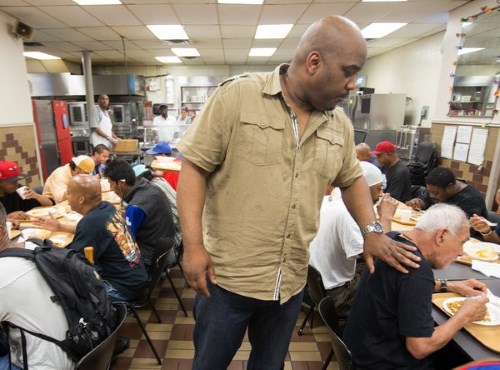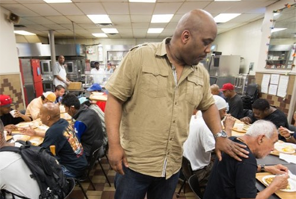
Daryl Foriest, director of distribution at the Food Bank’s pantry and soup kitchen in Harlem, was skeptical at first of the Toyota engineers’ efforts. “The line of people waiting to eat is too long,” he told them. “Make the line shorter.” They did.
The Food Bank for New York City is the country’s largest anti-hunger charity, feeding about 1.5 million people every year. It leans heavily, as other charities do, on the generosity of businesses, including Target, Bank of America, Delta Air Lines and the New York Yankees. Toyota was also a donor. But then Toyota had a different idea.
Instead of a check, it offered kaizen.
A Japanese word meaning “continuous improvement,” kaizen is a main ingredient in Toyota’s business model and a key to its success, the company says. It is an effort to optimize flow and quality by constantly searching for ways to streamline and enhance performance. Put more simply, it is about thinking outside the box and making small changes to generate big results.
Toyota’s emphasis on efficiency proved transformative for the Food Bank.
At a soup kitchen in Harlem, Toyota’s engineers cut down the wait time for dinner to 18 minutes from as long as 90. At a food pantry on Staten Island, they reduced the time people spent filling their bags to 6 minutes from 11. And at a warehouse in Bushwick, Brooklyn, where volunteers were packing boxes of supplies for victims of Hurricane Sandy, a dose of kaizen cut the time it took to pack one box to 11 seconds from 3 minutes.
Toyota has “revolutionized the way we serve our community,” said Margarette Purvis, the chief executive and president of the Food Bank.
But Toyota’s initial offer to the charity in 2011 was met with apprehension.
“They make cars, I run a kitchen,” said Daryl Foriest, director of distribution at the Food Bank’s pantry and soup kitchen in Harlem. “This won’t work.”
When Toyota insisted it would, Mr. Foriest presented the company with a challenge.
“The line of people waiting to eat is too long,” Mr. Foriest said. “Make the line shorter.”
Toyota’s engineers went to work. The kitchen, which can seat 50 people, typically opened for dinner at 4 p.m and when all the chairs were filled, a line would form outside. Mr. Foriest would wait for enough space to open up to allow 10 people in. The average wait time could be up to an hour and a half.
Toyota made three changes. They eliminated the 10-at-a-time system, allowing diners to flow in one by one as soon as a chair was free. Next, a waiting area was set up inside where people lined up closer to where they would pick up food trays. Finally, an employee was assigned the sole duty of spotting empty seats so they could be filled quickly. The average wait time dropped to 18 minutes and more people were fed.
The unusual partnership between Toyota and the Food Bank, which one Food Bank coordinator compared to a cultural exchange program, highlights a different way for-profit businesses can help their communities, experts said.
“It’s a form of corporate philanthropy but instead of giving money, they’re sharing expertise,” said David J. Vogel, a professor and an expert in corporate social responsibility at the Haas School of Business at the University of California, Berkeley. “It’s quite new.”
And many non-profit organizations, facing tighter budgets as financing from federal and local governments diminishes, are having to make smarter business decisions.
“Non-profit organizations are taking on what happens in the for-profit world because they will run better,” said Ronald P. Hill, a professor of marketing and business law at Villanova University.
In the early 1990s, Toyota limited sharing its expertise to its auto parts suppliers. But as the Toyota Production System Support Center, the company’s headquarters of efficiency, came to recognize broader interest in the Toyota model, the company offered consulting-style services to non-automotive manufacturers and non-profit organizations. Today, the center supports about 40 organizations, half of which are small to midsize manufacturers that pay a small fee. The rest are non-profits, like the Food Bank, that get the services free.

